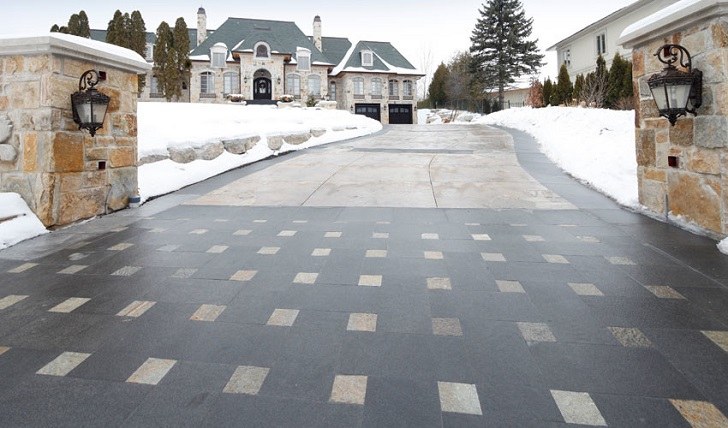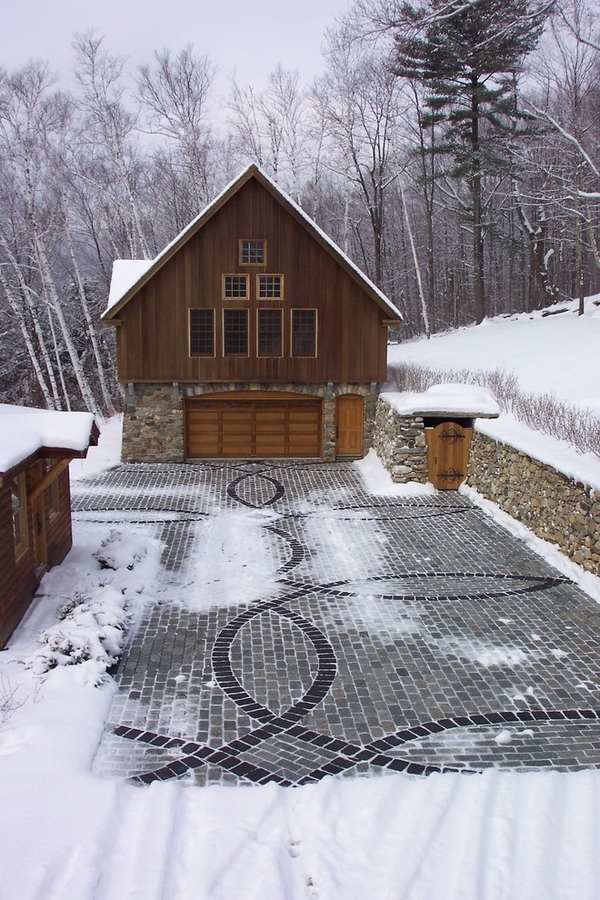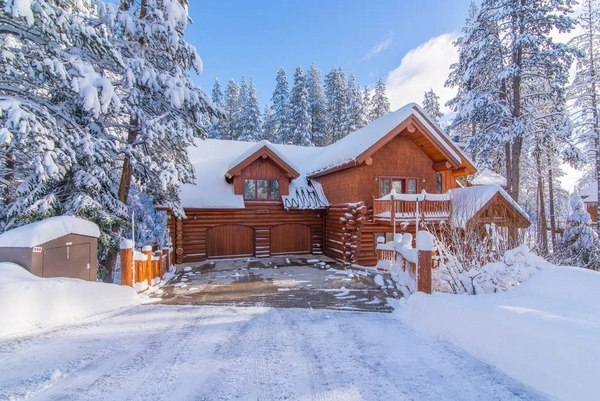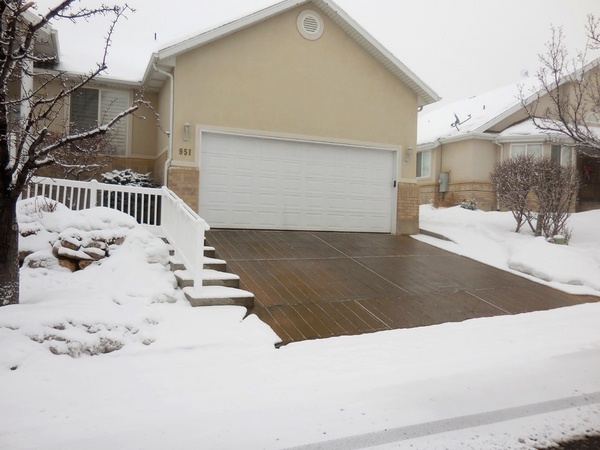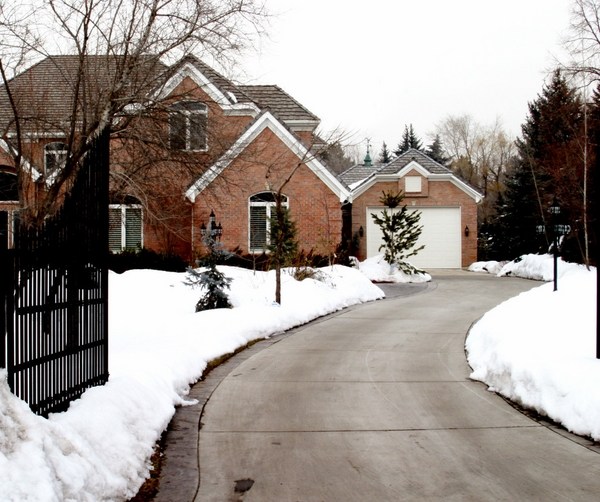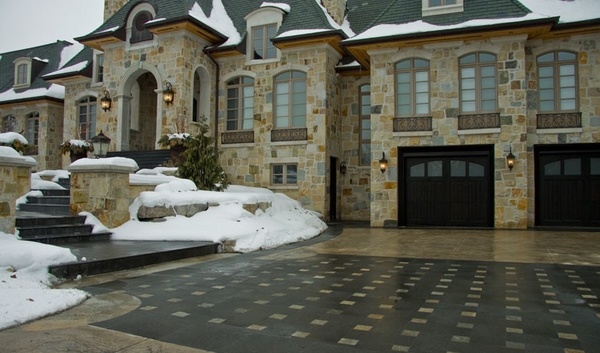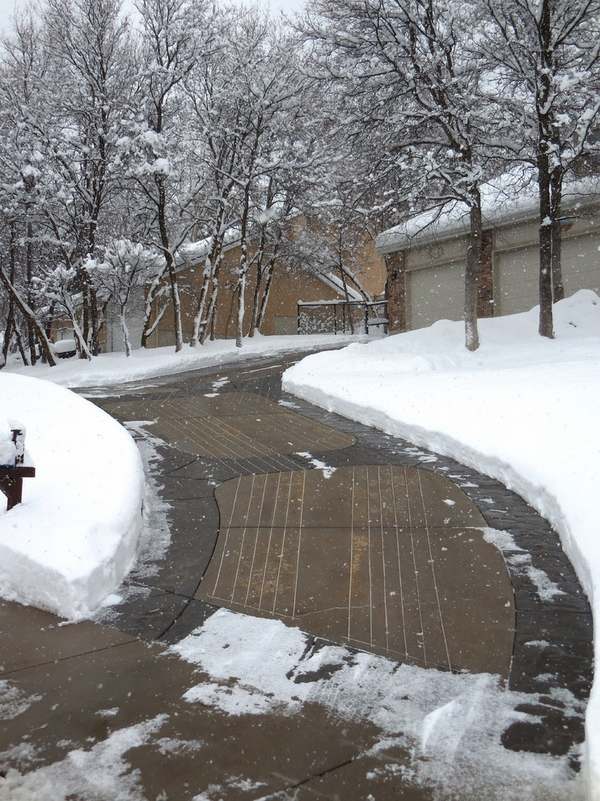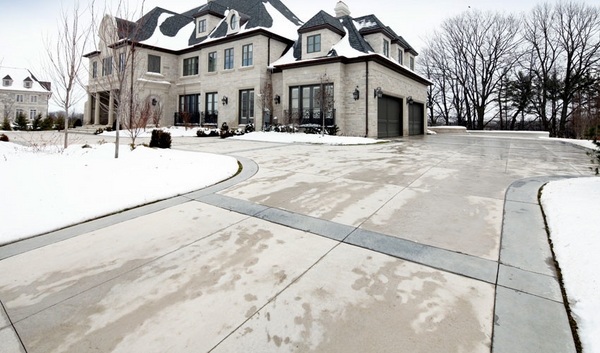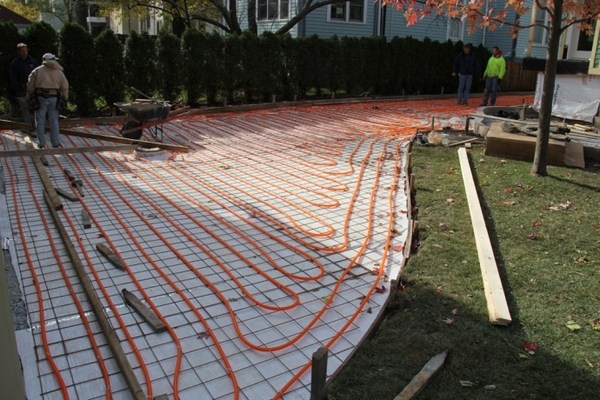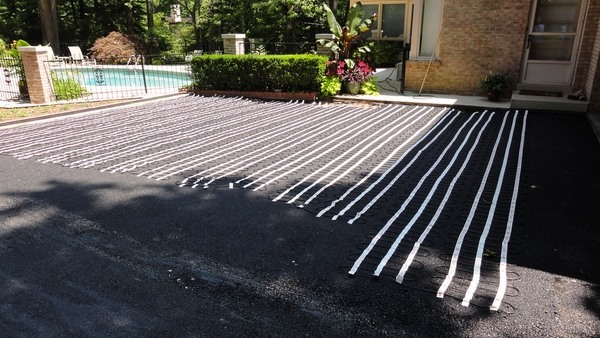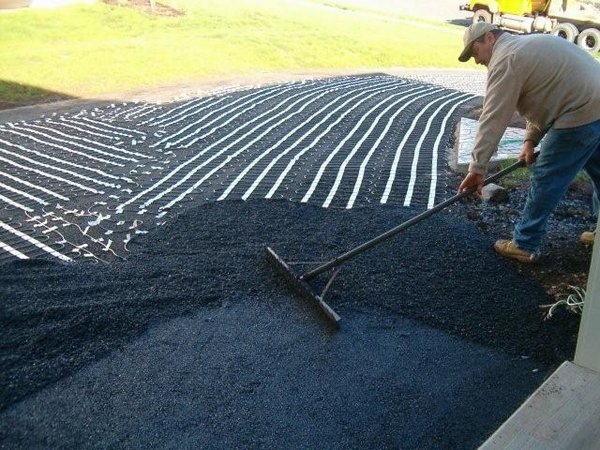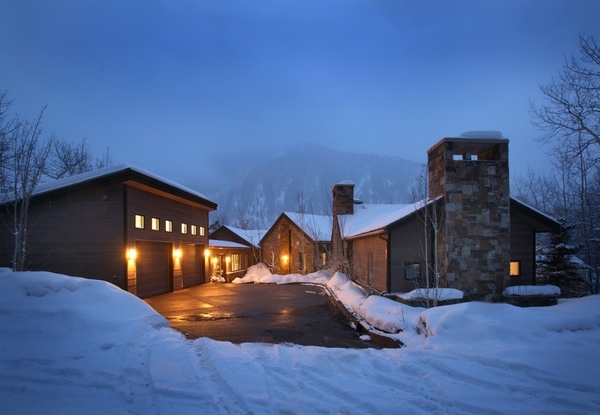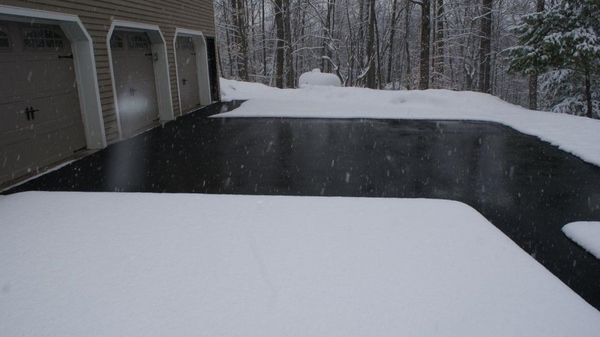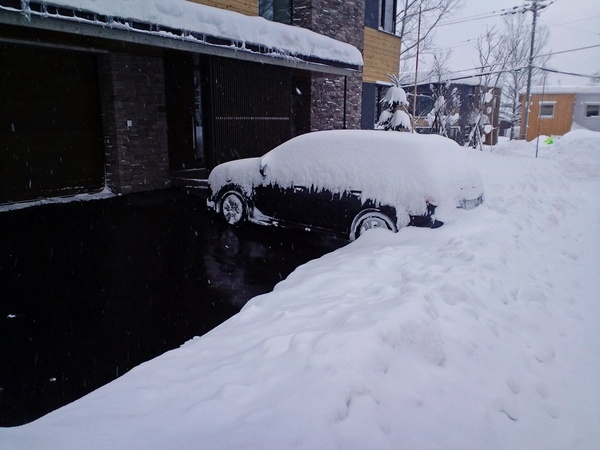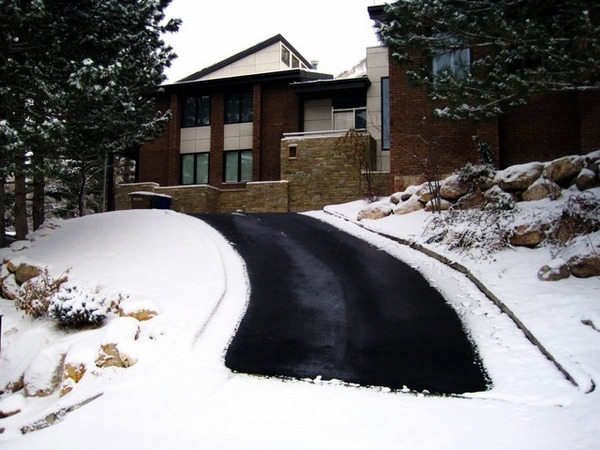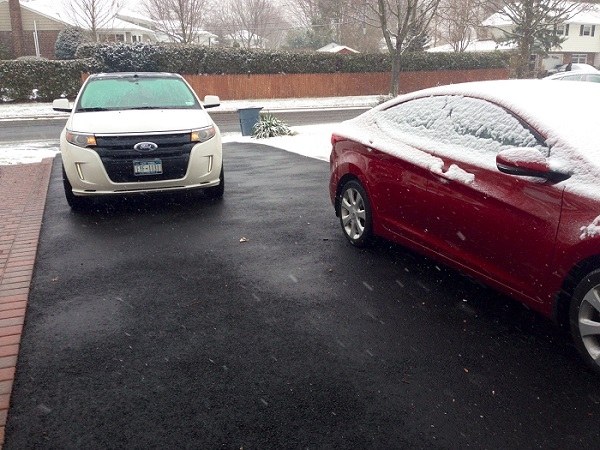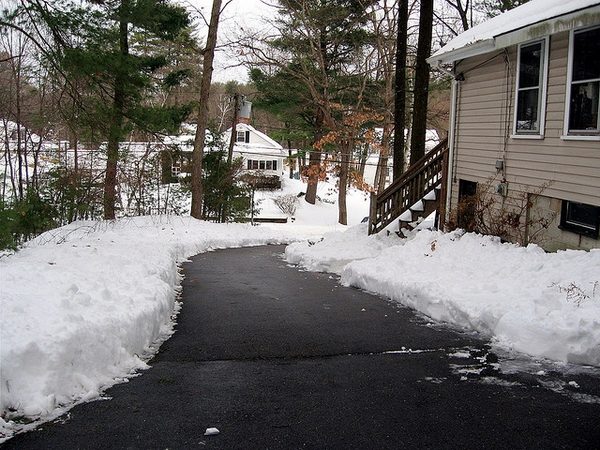Heated driveway ideas and snow melting systems have proven to be very efficient and helpful to many homeowners living in areas with heavy snowfall. A driveway improves the curb appeal of the home and the main advantage of heated structures over a standard one is that the melt the snow and your vehicles are not blocked in the garage. For everyone who had to shovel the snow from his path this is a huge benefit. We shall have a look at the most popular driveway heating and snow melting systems to see their advantages and benefits.
Heated driveway ideas – Why to choose them ?
There are many heated driveway ideas and instead of using chemicals or spending many hours in shoveling snow, you can ensure your convenience by investing in a heating system. A snow melting system has a number of key components – a heating element, embedded in the slab, sensors to detect outdoor air temperatures and moisture, a power source and a controller to tie the heating element, sensors, and power source together. What are the advantages of having a heated driveway beside the obvious one that your access to the car will not be blocked?
Safety and efficiency are one of the advantages as family members, friends, customers or employees will be protected from accidents like slipping on ice or snow. Further to that, most floor heating systems are energy efficient. They use one energy source and can be used only when needed to melt ice and snow.
Operating and maintenance costs of driveway heating systems are relatively low due to the fact that you use the heating only when needed. The maintenance is also very easy, as there are no visible elements to clean, oil, paint or protect in any other way.
Installation and warranty period – those would depend on the type of heating system and the manufacturer but in general, driveway heating systems are easy to install. Installation costs would be different, depending on the system itself, the surface size, etc. Some systems are offered with a 25 year warranty period.
Comfort and convenience without any doubt are among the main factors for the customers. Driveway heating systems are very quiet as they have no moving parts to produce irritating noises.
Adding to the value of the property is another reason to install a heated driveway. In this way the life of the driveway surface – asphalt, concrete, pavers and other surface – is increased.
Automatic activation options are available based on temperature/moisture sensors which are designed to turn on the snow melting system when the temperatures go below a certain level.
How heated driveway systems work?
Heated driveways are based on the principle of work of radiant floor heating systems which are installed indoors. When installed outdoors, heated water and antifreeze are pumped into the tubing of the heating systems, the snow is melted and the route is safe to use. Many homeowners wonder if heating systems can be installed under the surface of their driveway or patio and the answer is yes. Dnow melting systems can be installed under almost any surface. When you choose a heating system for your driveway, you have to know that it is best to replace the existing surface to make sure the heating system is properly installed. Rarely, the installation of the tubing can be done without replacing the existing covering, but this is more of an exception than a rule. In addition, systems that are installed under the existing path have limited warranty or come with no warranty at all.
Heated driveway ideas – How to choose the right type of heating system
When discussing heated driveways ideas and options, there are two main types of heating systems – hydronic or electric which are very efficient and easily operated. You can hardly say if one system is better than the other. The decision on the right heating system will depend on your personal needs, your budget and the snowfall in the area where you live.
Electric heating systems convert electric energy to heat and consist of three main elements: a heating cable, an activation device (snow sensor) and master control unit. The heating cable has to be durable, resistant, to withstand stress of concrete pours and extreme temperatures. Snow sensors can be installed on the pavement or in the air. The systems with automatic control usually have an aerial mounted snow sensor and the sensor sends a signal to the master control unit when moisture is detected and the temperature falls below the set level. The control unit, usually mounted in the garage, sends power to heat the cables under the surface.
Electric driveway heating systems are cost effective and with low maintenance, as they need minimal effort to maintain it after the initial installation. Further to that they are energy efficient and safe to use. They do not waste heat during the time of use and whether with automatic or manual control, the systems are designed safe for the family members, including children.
Hydronic heating systems
Hydronic driveway heating systems use a mixture of hot water and propylene glycol (antifreeze which is heated using a boiler. The the hot water is distributed through plastic pipes. A hydronic system for the driveway offers a number of benefits. The systems are designed to have a long service life. The tubing is resistant to chemicals and corrosion and does not become soft at high operating temperatures or brittle at low outdoor temperatures. You can use natural gas, electricity, oil, wood, or even solar collectors to operate your hydronic heating system. A circulating pump and supply and return manifolds, installed in an easily accessible location, transfer the water between the heat source and tubing. These systems are often preferred for areas with heavy snowfall as they are operated at a lower cost compared to electric radiant heat systems.

